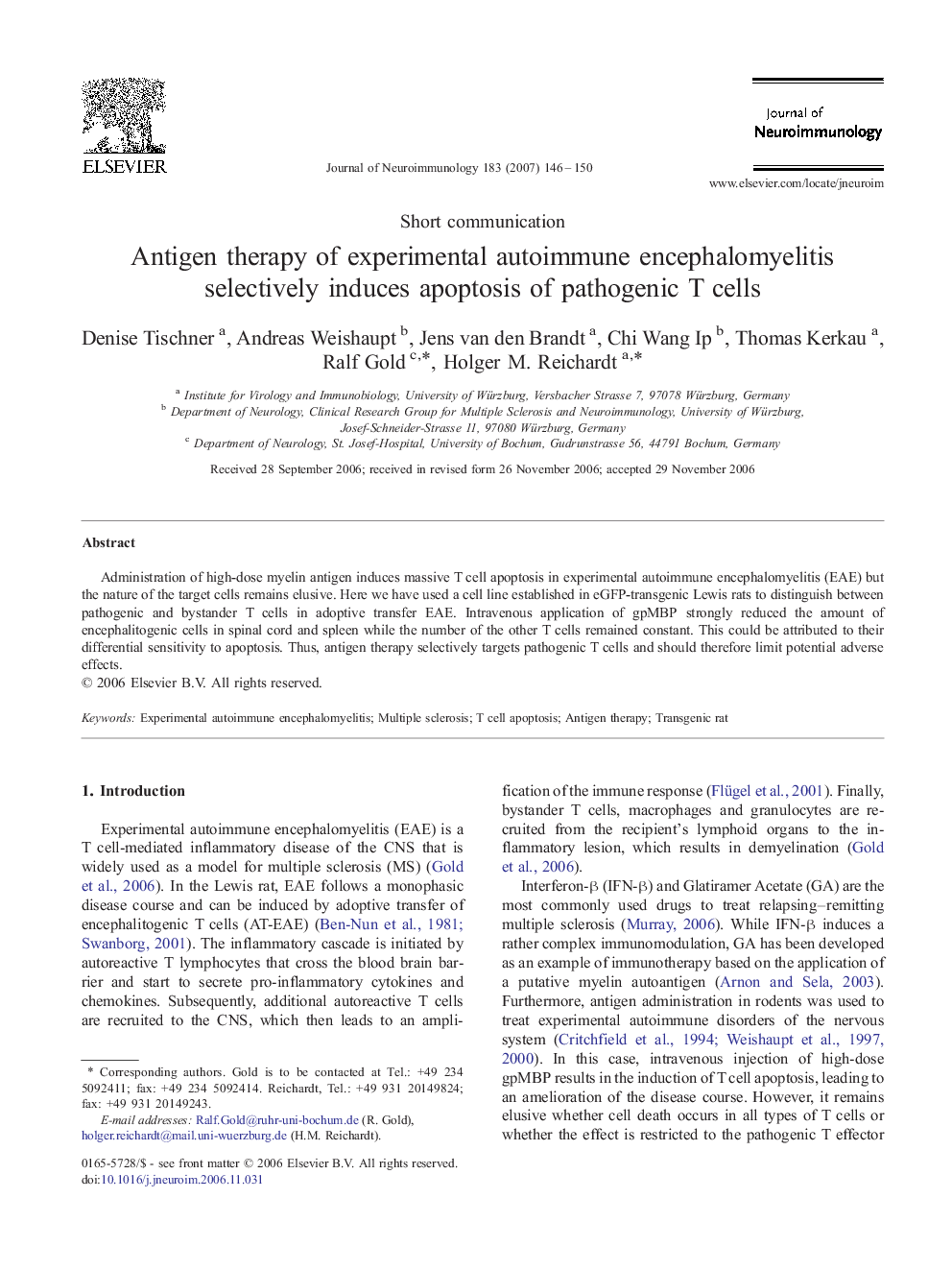| Article ID | Journal | Published Year | Pages | File Type |
|---|---|---|---|---|
| 3065815 | Journal of Neuroimmunology | 2007 | 5 Pages |
Abstract
Administration of high-dose myelin antigen induces massive T cell apoptosis in experimental autoimmune encephalomyelitis (EAE) but the nature of the target cells remains elusive. Here we have used a cell line established in eGFP-transgenic Lewis rats to distinguish between pathogenic and bystander T cells in adoptive transfer EAE. Intravenous application of gpMBP strongly reduced the amount of encephalitogenic cells in spinal cord and spleen while the number of the other T cells remained constant. This could be attributed to their differential sensitivity to apoptosis. Thus, antigen therapy selectively targets pathogenic T cells and should therefore limit potential adverse effects.
Keywords
Related Topics
Life Sciences
Immunology and Microbiology
Immunology
Authors
Denise Tischner, Andreas Weishaupt, Jens van den Brandt, Chi Wang Ip, Thomas Kerkau, Ralf Gold, Holger M. Reichardt,
